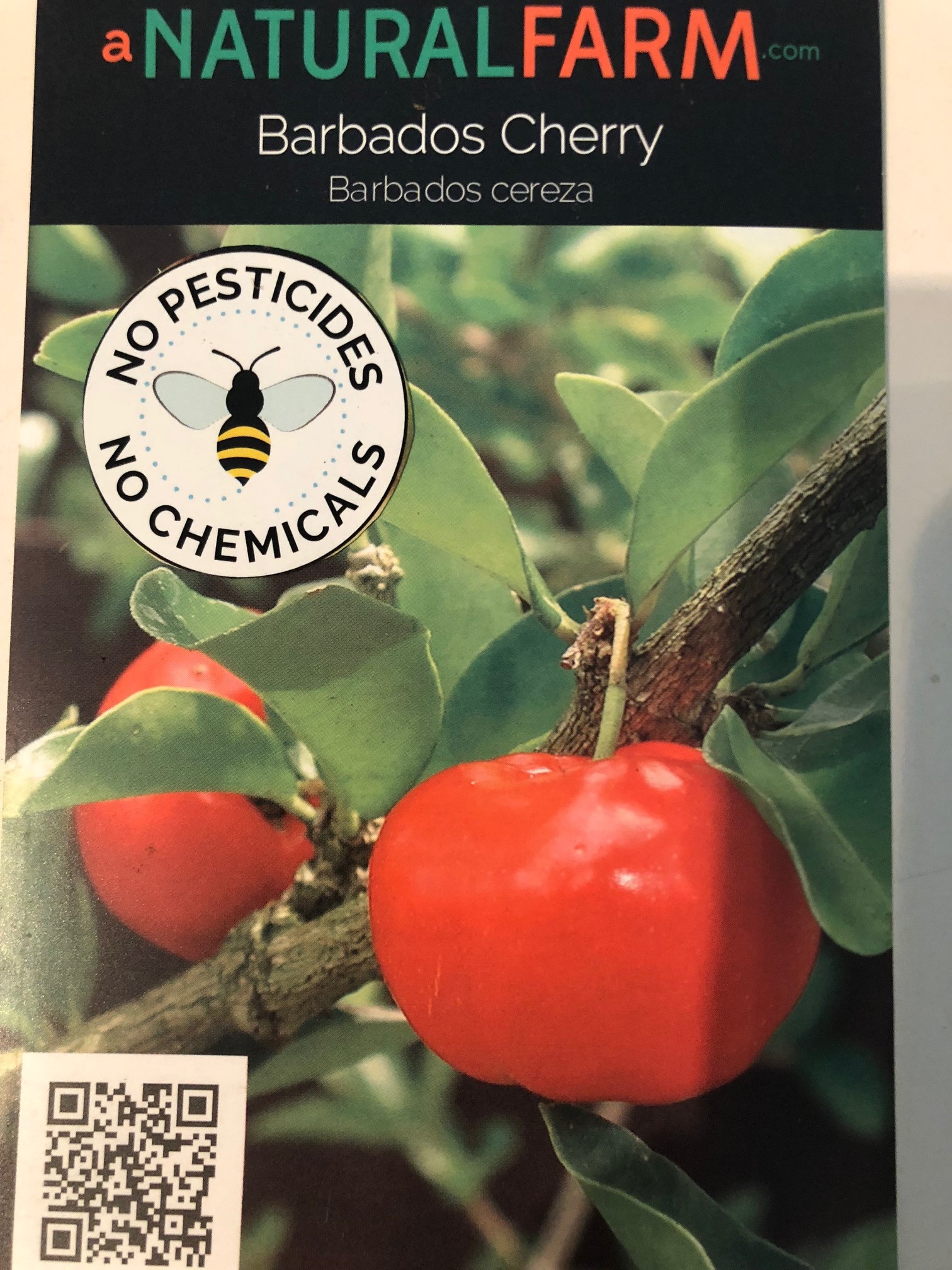Organically grown Barbados Cherry Plant UPS Shipping included in price 36" tall plants in 2 gallon pots - Non-GMO - Chemical Free (Copy)






Organically grown Barbados Cherry Plant UPS Shipping included in price 36" tall plants in 2 gallon pots - Non-GMO - Chemical Free (Copy)
Acerola Cherry/Barbados Cherry / Malpighia emarginata
Pot Size: 2 gallon pot (36” tall plant including pot height)
Age: 12 months (2 gallon pot)
Fruiting Age: same year planted
Minimum Height: 36" (2 gallon pot)
Propagation Method: Tissue culture from reliable stock
Malpighia punicifolia; Barbados Cherry, Acerola Cherry
### Prolific Fruit Bearer, High Dose of Vitamin C
Barbados Cherry has great potential as a very productive (nearly everbearing), staple fruit crop for tropical & subtropical regions. The soft, juicy red fruit is thin-skinned & incredibly delicious. Our variety seems to be sweeter than most of the tart varieties. The fruit contains 2-3 seeds inside which can be chewed and spit out with ease. Barbados cherry doesn't come with the hard pit of common cherry varieties and provides more vitamin C than its distant cousins. Its ascorbic acid content has been studied and shown to greatly assist the immune system.
Often forming as multi-trunked shrub or trained as a tree, this plant is strong. The wood is thick and heavy, allowing the plant to tolerate more wind and chill hours than other fruit bearing trees in its growing zone. Barbados Cherry can easily be grown in containers due to its size, but for a full range of nutrient and to reach its climatic size, planting in the landscape will offer the most benefits.
*Planting Instructions*
Barbados cherry prefers a sandy soil with plenty of moisture during fruiting months. Plant in full sun for more fruit, ensuring a regular watering schedule during periods of heat & drought. Planting as understory tree in a companion planting design will reduce watering & cold protection but offer less fruit. Plant according to your garden's design! :)
To establish the plant, initial watering schedule can include 2-3 times weekly, with reduced needs in subsequent weeks. Water needs are minimal once established. Supplemental watering during fruiting months will produce a heavier harvest.
Mulch heavily with loose organic bedding materials to protect over cooler months while plant is dormant and retain moisture in the warm months. To maximize yield and ensure a healthy life of your fruit tree: mulch around the drip line, topdress with compost, vermicpompost & organic matter regularly, use organic fertilizer high in nitrogen 2-3 times per year, garden with companion plants of cover crops, flowering plants and herbs!
USDA Hardiness Zones: 8-11
Chill Hours: -
Deciduous/Evergreen: Semi-Evergreen
Plant Type: Perennial
Pollinator: Self-fertile
Blooming Season: May-November
Ripening Season: 2-3 weeks after flowering, can fruit for many months varying with watering schedule. Bears heavy fruit sets in summer months.
Years to Bear Fruit/Edible Qualities:
Full Size: Bushy shrub growing up to 10' high
Cold Tolerance: Cold tolerant for brief exposure to 28 degrees. Protect young plants at 30 degrees.
Light Requirements: Full Sun for more fruits
Drought Tolerance/Watering: Drought Tolerant once established but ensure watering during flowering & fruiting. For initial planting water every day to every other day and then gradually begin water 2-3 times per week after initial planting
Soil & Site Requirements: Prefers slightly acidic soil, tolerant of a variety of soils.
Links: https://www.hort.purdue.edu/newcrop/morton/barbados_cherry.html"
For our farm’s full availability please view our price list - www.anaturalfarm.com/availability
Photos and listing description are derived from our creative team and is for our use only. Thank you for your consideration in respecting our content! :)
